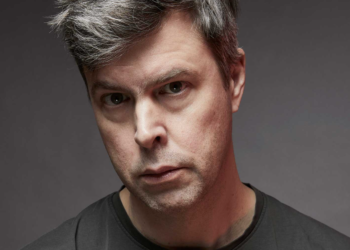Investors once saw Johnson & Johnson as a “set it and forget it” stock—but 2025 hasn’t been so kind. Despite positive updates on drug sales and a record-breaking dividend streak, J&J shares are lagging. And with the stock sitting nearly 17% below its 2022 highs, many are starting to ask—what’s really going on?
A Missed Opportunity or a Misunderstood One?
At first glance, J&J’s stock performance looks disappointing. Year to date, it’s down 7.5%—a far cry from the steady climb investors came to expect over decades. But context matters.
Last year, shareholders received a meaningful stake in Kenvue, the consumer health spinoff that now trades separately. While that might’ve left J&J’s chart looking weaker, it was a strategic refocus. The company shed its slow-growth consumer brands like Tylenol and Band-Aid to lean harder into pharma and medtech.
And it hasn’t taken its foot off the gas.
In Q2 2025, management raised full-year guidance. Not cut. Raised. That doesn’t scream trouble. It suggests confidence. Yet, the market hasn’t responded with much enthusiasm—at least, not yet.

Investors Still Get Paid to Wait
No one’s buying J&J expecting it to double in six months. It’s a dividend investor’s pick, not a meme stock.
And those investors are still being rewarded. This April, J&J raised its dividend for the 63rd straight year—upping the quarterly payout by 4.8% to $1.30 per share. At current prices, that’s about a 3.3% dividend yield.
In a market full of uncertainty, that kind of reliability is hard to come by.
Sure, the loss of exclusivity for Stelara has spooked some people. But Stelara now represents less than 7% of revenue. This isn’t a one-trick pony—it’s a full-blown pharma engine with dozens of irons in the fire.
Newer drugs are already picking up the slack. Spravato, the depression treatment that often flies under the radar, saw its sales surge 48% in the first half of 2025. It’s now pacing at $1.5 billion a year.
A Pipeline That’s Quietly Gaining Steam
Let’s be honest—most people aren’t refreshing FDA approval calendars. But analysts sure are. And J&J’s pipeline is buzzing.
Caplyta, which it picked up in April, could be the dark horse. The company recently filed for approval to market it as a schizophrenia relapse prevention drug. In trials, it reduced the risk of relapse by 63%. That’s not just good—it’s industry-shaking.
Also worth watching: the Ottava robotic surgical system. Still in trials, but surgeons just started using it in real cases this April.
Now, nobody’s pretending this will dethrone Intuitive Surgical overnight. But Ottava isn’t a moonshot—it’s a calculated move into a booming market. One J&J has the muscle to play in long-term.
Here’s why Ottava could matter:
-
Medical devices typically hold patents longer than drugs.
-
Surgical robotics has high margins and sticky hospital customers.
-
Even small market share gains could mean billions annually.
Sales Growing, Even Without a Full Arsenal
Even without Ottava in the mix, J&J’s MedTech business is moving in the right direction. Second-quarter sales were up 7.3% year over year. That’s solid growth in a space where innovation and execution matter more than hype.
Break for flow.
Demand isn’t going away either. With aging populations, procedures like knee replacements and cardiac stents aren’t slowing down. J&J is already a leader in those spaces. That means built-in demand for decades.
Meanwhile, the pharma business is still growing, even in the face of competition. In Q2, pharmaceutical revenue increased by 4.9%—despite Stelara’s fade. Not too shabby.
Growth Expectations: Keep ‘Em Realistic
Here’s the thing—J&J isn’t trying to be the next Nvidia. It’s trying to be the most stable blue chip in your portfolio. And for that role, it still fits.
But investors dreaming of explosive capital gains may want to rethink. Here’s why:
| Factor | Details |
|---|---|
| Patent Risks | Stelara’s loss now, Darzalex in 2029 |
| Revenue Share | Darzalex is 14.9% of total revenue |
| R&D Pipeline | Over a dozen promising candidates in Q2 alone |
| Long-Term Growth | High-single-digit CAGR likely, not double digits |
A big part of J&J’s game is managing dozens of drug cycles at once. Some products climb while others fall. It’s not sexy, but it’s consistent.
If you’re looking for stock price fireworks, this probably isn’t your ticket. But if you care about a growing dividend and solid, long-haul stability, J&J still deserves a spot on your radar.
































